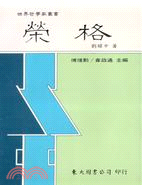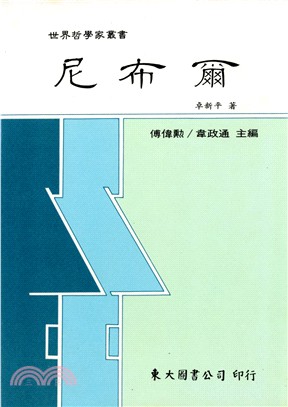商品簡介
Inventory Best Practices, Second Edition offers the latest and most important information on advanced techniques and strategies to improve on the accuracy of all ongoing inventories, configure a warehouse for optimum counting efficiencies, and more.
- Explains the difference between different types of distressed merchandise for disposal purposes
- Shows how to maximize the efficiency of inventory tracking systems by shifting selected inventory items into floor stock
- Examines inventory picking, storage, transactions as well as warehouse layouts, and inventory measurement
Inventory Best Practices, Second Edition will not only show professionals how to cut their business costs but will demonstrate how to optimize their company's effectiveness as well.
作者簡介
目次
Chapter 1 Success or Failure with Best Practices.
Types of Best Practices.
Most Fertile Ground for Best Practices.
Planning for Best Practices.
Timing of Best Practices.
Implementing Best Practices.
How to Use Best Practices: Best Practice Duplication.
Why Best Practices Fail.
Summary.
Chapter 2 Inventory Purchasing.
2.1 Include Suppliers in the New Product Design Process.
2.2 Use Supplier-Concurrent Engineering.
2.3 Avoid Designing Risky-Procurement Items into Products.
2.4 Match Product and Part Life Cycles.
2.5 Reduce Safety Stock by Shrinking Supplier Lead Times.
2.6 Purchase Supplier Capacity.
2.7 Reduce Safety Stocks by Accelerating the Flow of Internal Information.
2.8 Buy from Suppliers Located Close to the Company.
2.9 Relocate Suppliers On-Site.
2.10 Use Local Suppliers for Rapid Replenishment.
2.11 Consider Foreign Sourcing.
2.12 Use Auctions for Selective Purchases.
2.13 Compare Suppliers Based on Total Landed Cost.
2.14 Eliminate Approvals of Routine Purchases.
2.15 Purchase Based on Material Requirements Planning.
2.16 Compare Open Purchase Orders to Current Requirements.
2.17 Freeze the Short-Term Production Schedule.
2.18 Share Production Plan with Suppliers.
2.19 Obtain Direct Links into Customer Inventory Planning Systems.
2.20 Require Frequent Deliveries of Small Quantities.
2.21 Arrange for Inbound Split Deliveries.
2.22 Arrange for Phased Deliveries.
2.23 Adopt Rolling Schedules.
2.24 Adopt Just-in-Time Purchasing.
2.25 Implement Stockless Purchasing.
2.26 Centralize Purchasing.
2.27 Designate Major Suppliers as Lead Suppliers.
2.28 Single-Source Products.
2.29 Install a Supplier Rating System.
2.30 Use Long-Term Supplier Relationships for Strategic Purchases.
2.31 Shift Raw Materials Ownership to Suppliers.
2.32 Flag Changes Impacting Advance Material Requests.
Chapter 3 Inventory Receiving and Shipping.
3.1 Reject Unplanned Receipts.
3.2 Obtain Advance Shipping Notices for Inbound Deliveries.
3.3 Directly Enter Receipts into Computer.
3.4 Automatically Collect Inbound and Outbound Cube and Weight Information.
3.5 Repackage Incoming Items into Increments Ordered by Customers.
3.6 Put Away Items Immediately After Receipt.
3.7 Stage Received Goods for Zone Putaways.
3.8 Eliminate the Receiving Function.
3.9 Combine the Shipping and Receiving Functions in One Area.
3.10 Assign Docks Based on Minimum Warehouse Travel Time.
3.11 Require Supplier Deliveries with Open-Sided Trucks Directly to Production.
3.12 Ship Using Returnable Wheeled Containers.
3.13 Use Dunnage Bags to Cushion Outbound Shipments.
3.14 Use Shippers with the Most Consistent Delivery Performance.
3.15 Have Delivery Person Deliver the Invoice.
3.16 Pay Suppliers Based Only on Receiving Approval.
3.17 Provide Pending Shipment Information to the Collections Staff.
Chapter 4 Inventory Storage.
4.1 Drop Ship Inventory.
4.2 Cross-Dock Inventory.
4.3 Move Inventory to Floor Stock.
4.4 Use Temporary Storage for Peak Inventory Requirements.
4.5 Assign Unique Location Codes to All Inventory Storage Locations.
4.6 Reduce the Number of Inventory Bin Locations Assigned to the Same Product.
4.7 Assign Fixed Inventory Locations to High-Volume Items.
4.8 Segregate Customer-Owned Inventory.
4.9 Allocate Warehouse Areas to Specific Customers.
4.10 Segregate Inventory by ABC Classification.
4.11 Store High-Pick Items in Order Fulfillment Zones.
4.12 Adjust Case Height to Match Cubic Storage Capabilities.
4.13 Adjust Case Stacking or Width to Avoid Pallet Overhang.
4.14 Combine Out-and-Back Inventory Moves.
4.15 Use Different Storage Systems Based on Cubic Transactional Volume.
4.16 Use Modular Storage Cabinets for Low-Storage-Volume Items.
4.17 Use Carousels to Increase Picking Efficiency.
4.18 Use Moveable Racking Systems.
4.19 Use Multistory Manual Picking Systems.
4.20 Use Gravity-Flow Racking for FIFO Picking.
4.21 Use Pallet-Flow Racks for Pallet FIFO Picking.
4.22 Create Double-Deep Racking or Stacking Lanes for Large SKU Pallet Volumes.
4.23 Use Push-Back Racks for Multiple Pallet Storage.
4.24 Eliminate Cross Bracing in Low-Weight Storage Configurations.
Chapter 5 Inventory Picking.
5.1 Group Single-Line Orders and Pick in Order by Location.
5.2 Use Single-Order Picks for Emergency Orders.
5.3 For Manual Systems, Pick from the Source Document.
5.4 Implement Forward Picking.
5.5 Use Wave Picking by Grouping to Consolidate Transactions.
5.6 Use Zone Picking to Consolidate Total Transactions.
5.7 Use Zone Picking with Order Forwarding.
5.8 Use Voice Picking to Record Low-Volume Picking Transactions.
5.9 Use Pick-to-Light to Record High-Volume Picking Transactions.
5.10 Use Portable Scales to Pick Small Items.
5.11 Pick into Multibin Carts.
5.12 Store Kitted Inventory in an Accumulation Bin.
5.13 Use Standard Containers to Move, Store, and Count Inventory.
5.14 Issue Parts in Full-Bin Increments.
5.15 Have Suppliers Sequence Their Parts Deliveries.
5.16 Avoid Restocking during a Picking Shift.
5.17 Optimize Inventory Storage through Periodic Location Changes.
Chapter 6 Production Issues Impacting Inventory.
6.1 Eliminate Incentive Pay Systems Causing Excessive Production.
6.2 Standardize the Number of Shifts Worked throughout a Factory.
6.3 Allow Production Workers to Call Suppliers about Faulty Materials.
6.4 Invest in Smaller, Low-Capacity Machines Rather than High-Capacity Ones.
6.5 Purchase Machines from a Single Supplier.
6.6 Produce the Same Parts on the Same Machine Every Time.
6.7 Perform Inspections at the Next Downstream Workstation.
6.8 Improve Periodic Equipment Maintenance.
6.9 Shift Some Equipment Maintenance to the Production Staff.
6.10 Preplan Major Equipment Maintenance.
6.11 Replace Aisles with Conveyors.
6.12 Schedule Smaller Production Batches.
6.13 Produce to Order rather than to Stock.
6.14 Reduce Container Sizes.
6.15 Reduce Setup Times.
6.16 Shorten Cycle Times.
6.17 Replace Straight Assembly Lines with Serpentine Lines.
6.18 Reduce the Length of the Assembly Line.
6.19 Divide the Assembly Line into Segments.
6.20 Use Cellular Manufacturing.
6.21 Group Machine Cells Near Common Inventory Storage Areas.
6.22 Position Local Cell Storage between Workstations and Aisles.
Chapter 7 Inventory Transactions.
7.1 Reduce the Number of Stored Data Elements.
7.2 Record Inventory Transactions with Barcodes.
7.3 Record Inventory Transactions with Radio Frequency Communications.
7.4 Track Inventory with Radio Frequency Identification (RFID).
7.5 Eliminate All Paper from Inventory Transactions.
7.6 Use the Kanban System to Pull Transactions through the Facility.
7.7 Eliminate All Transaction Backlogs.
7.8 Verify That Receipts Are Entered in the Computer System at Once.
7.9 Have Customers Order by Part Number.
7.10 Audit All Inventory Transactions.
7.11 Compare Recorded Inventory Activity to On-Hand Inventories.
7.12 Immediately Review All Negative Inventory Balances.
7.13 Replace the Physical Count Process with Cycle Counts.
7.14 Use Control Groups to Locate Transaction Errors.
7.15 Prioritize Cycle Counts on Next-Usage Items.
7.16 Streamline the Physical Count Process.
7.17 Install a Warehouse Management System.
Chapter 8 Inventory Planning and Management.
8.1 Include Materials Managers in the New Product Design Process.
8.2 Reduce the Number of Product Options.
8.3 Increase Prices for Non-Standard Options.
8.4 Increase Prices for Small-Unit Orders.
8.5 Convert Information Products to Electronic Versions.
8.6 Reduce the Number of Products.
8.7 Reduce the Number of Customers.
8.8 Avoid Promotions.
8.9 Design Products with Lower Tolerances.
8.10 Require Formal Review and Approval of Engineering Change Orders.
8.11 Assign Inventory Items to Classifications.
8.12 Forecast Demand by Product Families.
8.13 Segment Forecasted Demand into Stable and Unstable Products.
8.14 Centralize Responsibility for Inventory Planning.
8.15 Delay the Order Penetration Point as Long as Possible.
8.16 Use a Material Requirements Planning System to Model Alternative Lot Sizes, Safety Stocks, and Lead Times.
8.17 Reduce Job Releases to Production.
8.18 Prioritize Production Based on Delivery Region.
8.19 Use Variable Safety Stocks for Fluctuating Demand.
8.20 Convert Safety Stock to Just-in-Case Stock.
8.21 Eliminate Expediting.
8.22 Develop a Product Substitution System.
8.23 Question the Level of Customer Service Provided.
8.24 Focus Inventory Reduction Efforts on High-Usage Items.
8.25 Create a Visual Review System for Noninventoried Parts.
8.26 Eliminate Departmental Stocks.
8.27 Install a Distribution Requirements Planning System.
8.28 Distribute Slow-Moving Items from Regional Warehouses.
8.29 Install a Hold and Flow System.
8.30 Use Overnight Delivery from a Single Location for Selected Items.
8.31 Use Fair Shares Analysis to Allocate Inventory to Warehouses.
8.32 Periodically Rationalize the Warehouse Network.
8.33 Plan for Product Shutdowns.
8.34 Create a Materials Review Board.
8.35 Identify Obsolete Inventory via Physical Inventory Tags.
8.36 Plan for Service Parts Inventory Levels.
8.37 Inspect Returned Merchandise for Usability.
8.38 Reserve Otherwise Obsolete Inventory with “Service/Repair” Designation.
8.39 Avoid Product Obsolescence with Shelf-Life Control.
8.40 Create an Obsolete Inventory Budget for Disposals.
8.41 Batch Excess Inventory for Sale to Salvage Contractors.
8.42 Sell Excess Items through the Service Department.
8.43 Set Up a Reverse Logistics System.
8.44 Outsource Selected Warehousing Functions.
Chapter 9 Warehouse Layout.
9.1 Include Other Issues than Cost in a Warehouse Acquisition Decision.
9.2 Generally Organize the Warehouse in a U-Shaped Process Flow.
9.3 Organize the Warehouse by Storage Zones.
9.4 Maximize Vertical Storage Space.
9.5 Tailor Vertical Storage Space to Manual Picking Needs.
9.6 Enclose Building Supports in Racks.
9.7 Use Narrow Aisles in Manual Putaway and Picking Zones.
9.8 Avoid Aisles Adjacent to Outside Walls.
9.9 Use Automated Storage and Retrieval Systems.
9.10 Use Automated Guided Vehicle Systems.
9.11 Use Conveyors to Reduce Employee Travel.
9.12 Avoid an Excessive Level of Warehouse Automation.
9.13 Eliminate the Quality Review Area.
9.14 Enlarge the Receiving Area.
9.15 Design Just-in-Time Docks for the Largest Anticipated Trucks.
9.16 Lock Down the Warehouse Area.
9.17 Plan for Maximized Warehouse Space Utilization.
9.18 Eliminate the Warehouse.
Chapter 10 Cost Accounting.
10.1 Eliminate Purchase Price Variance Tracking.
10.2 Eliminate Tracking of Work-in-Process Inventory.
10.3 Eliminate Scrap Reporting in the Production Area.
10.4 Charge the Entire Inventory to Expense.
10.5 Use Specific Identification Costing with RFID Tags.
10.6 Have the Cost System Separate Value-Added and Nonvalue-Added Activities.
10.7 Assign Overhead Based on Square Footage Used.
10.8 Do Not Credit Internal Departments with Sales When Production Is Completed.
10.9 Report on Landed Cost Instead of Supplier Price.
10.10 Report on the Total Cost of Product Ownership.
10.11 Implement Activity-Based Costing.
10.12 Assign Overhead Personnel to Specific Subplants.
10.13 Implement Target Costing.
10.14 Limit Access to Unit-of-Measure Changes.
10.15 Review Cost Trends.
10.16 Review Material Scrap Levels.
10.17 Revise Traditional Cost Accounting Reports.
10.18 Audit Labor Routings.
10.19 Follow a Schedule of Inventory Obsolescence Reviews.
Chapter 11 Bills of Materials.
11.1 Audit Bills of Materials.
11.2 Conduct a Configuration Audit.
11.3 Modify the Bills of Materials Based on Actual Scrap Levels.
11.4 Modify the Bills of Materials for Temporary Substitutions.
11.5 Eliminate Redundant Part Numbers.
11.6 Standardize Parts.
11.7 Review Inventory Returned to the Warehouse.
11.8 Use Bills of Materials to Find Inventory Made Obsolete by Product Withdrawals.
11.9 Identify Inactive Inventory in the Product Master File.
Chapter 12 Impact of Constraints on Inventory.
Overview of the Theory of Constraints.
Overview of the Constraint Buffer.
Alternatives to the Constraint Buffer.
Expedite Zone.
Buffer Manager.
Buffer Hole.
Buffers for Labor Operations.
Assembly Area Buffer.
Inventory Releases.
Batch Sizes.
Summary.
Chapter 13 Inventory Policies and Procedures.
13.1 Create a Policies and Procedures Manual.
13.2 Train the Warehouse and Accounting Staffs in Inventory Procedures.
13.3 Cross-Train for Mission-Critical Activities.
13.4 Train Using Training Teams.
Chapter 14 Inventory Measurements.
14.1 Percentage of New Parts Used in New Products.
14.2 Percentage of Existing Parts Reused in New Products.
14.3 Raw Material Content.
14.4 Bill of Materials Accuracy.
14.5 Item Master File Accuracy.
14.6 Economic Order Quantity.
14.7 Distribution Turnover.
14.8 On-Time Parts Delivery Percentage.
14.9 Incoming Components Correct Quantity Percentage.
14.10 Purchased Component Defect Rate.
14.11 Percentage of Receipts Authorized by Purchase Orders.
14.12 Percentage of Purchase Orders Released with Full Lead Time.
14.13 Putaway Accuracy.
14.14 Putaway Cycle Time.
14.15 Scrap Percentage.
14.16 Average Picking Time.
14.17 Picking Accuracy for Assembled Products.
14.18 Average Picking Cost.
14.19 Order Lines Shipped per Labor Hour.
14.20 Shipping Accuracy.
14.21 Percentage of Products Damaged in Transit.
14.22 Warehouse Order Cycle Time.
14.23 Inventory Availability.
14.24 Delivery Promise Slippage.
14.25 Average Back-Order Length.
14.26 Dock Door Utilization.
14.27 Inventory Accuracy.
14.28 Inventory Turnover.
14.29 Percentage of Warehouse Stock Locations Utilized.
14.30 Square Footage of Warehouse Storage Space.
14.31 Storage Density Percentage.
14.32 Inventory per Square Foot of Storage Space.
14.33 Storage Cost per Item.
14.34 Average Pallet Inventory per SKU.
14.35 Rate of Change in Inactive, Obsolete, and Surplus Inventory.
14.36 Obsolete Inventory Percentage.
14.37 Percentage of Inventory > X Days Old.
14.38 Percentage of Returnable Inventory.
Appendix Summary of Inventory Best Practices.
Glossary.
About the Author.
Index.
主題書展
更多書展本週66折
您曾經瀏覽過的商品
購物須知
外文書商品之書封,為出版社提供之樣本。實際出貨商品,以出版社所提供之現有版本為主。部份書籍,因出版社供應狀況特殊,匯率將依實際狀況做調整。
無庫存之商品,在您完成訂單程序之後,將以空運的方式為你下單調貨。為了縮短等待的時間,建議您將外文書與其他商品分開下單,以獲得最快的取貨速度,平均調貨時間為1~2個月。
為了保護您的權益,「三民網路書店」提供會員七日商品鑑賞期(收到商品為起始日)。
若要辦理退貨,請在商品鑑賞期內寄回,且商品必須是全新狀態與完整包裝(商品、附件、發票、隨貨贈品等)否則恕不接受退貨。























